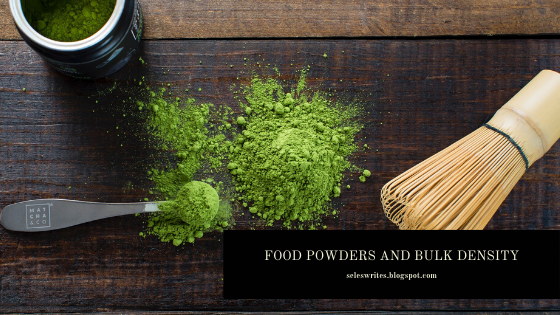Should you measure food in spoons?
Well, it depends on what and why you are measuring.
People who cook, bake
or just work with a lot of powdered ingredients in the food are always
conscious of what and how much of it they put in their recipes. These food
magicians often enjoy mundane activities like grocery shopping and selecting the right box to buy to
fill their pantry shelves. No one wants to compromise with the taste. But a lot
of people are always ready to compromise on the price. And why shouldn’t we?
Saving money is a definite way to bring joy. Hence, whenever a company
introduces a product in the market, similar to one we were using before, and
offer the same quantity at a lower price, most of us prefer to switch to these
money-saving brands. But are you sure that you are saving money in this
process?

Let’s take an example of health drinks powder like Horlicks, Bournvita or Protinex. Even though these items are listed under the category ‘Health Drinks’ on Amazon, most of us use it as taste modifier in our glass of milk. The most common way to prepare such drinks is to take a spoon (or a few spoons) of this health drink powder, add it to the glass and stir it to mix it uniformly with the milk. Most of us have our own fixed recipes, where we use spoons to measure how much powder to add into the milk. Its a hassle-free and a quick way to prepare food. But has it ever happened that you switched from one brand to another, bought the same size (in terms of net weight) of the box you used to before, used the same number of spoons in the milk as per your already developed recipe, and ended up finishing the box sooner than you predicted?
While comparing two brands offering the same product, we often tend to compare the price and the net weight of the product the box offer. But most of us don't think about ‘Bulk Density’ of the two powders.
What is bulk density?
According to Science Direct, Bulk density is defined as the amount of powder by weight present in a defined volume and is expressed as g/mL. When a bulk density of a product is high, it means you can fill/ fit more amount of product in a specified volume. And when the bulk density of a product is low, it means you can fill/fit less amount of product in the same specified volume.
 |
| Photo by Steve Johnson on Unsplash |
To understand this
concept better, take two beakers (you can also take a glass or a bottle with a
volume scale displayed on the outside). And now take two different brands of the
same powdered product. Since, in this article, we are taking the example of
health drinks, you can take Bournvita and Horlicks. Or you can take any two of
the most easily available brands in your area. (If you want, you can also
experiment it with any other powdered food product). Fill up one beaker up to 50 mL with
Borunvita and the second beaker, again up to 50 mL, with Horlicks.
Now on a
weighing scale, place a bowl and calibrate the scale accordingly. Pour the
powder from the first beaker into the bowl, weigh it and record your
observation. Now, either empty this bowl or take another similar bowl and
repeat the process with the powder in the second beaker. You’ll notice that,
although, both the samples were the same in volume, they differed in weight. The weight of the product divided by the volume it occupies will be its bulk density. And since both the products will weigh differently, their bulk densities will be different too.
Similarly, when you use spoons to measure the ingredients to your recipe, you may be adding the same volume of the product but you are not always adding the same weight of the product (it happens usually whenever you change a product).
How is Bulk Density and Saving Money related when it comes to food?
Bulk Density is one of the most important concepts studied by food engineers. A product with high bulk density is often desirable by people in the food industry. Why? Usually, food industries pay for the transportation of products according to the number of trucks/ vans they use. So when a product has high bulk density, it means you can pack more food in the packaging and you can fit more boxes in the transportation trucks. It, in turn, helps them to save money.
However, it must also be mentioned that high bulk density not only helps food companies save money, it can also help them to earn more money. When you buy a product with high bulk density and add the same number of spoons to your recipe, as you used to with the earlier product, chances are you’ll be finishing this box sooner than predicted and will go back to shopping again to buy a new box.
So next time you
switch to a new brand, record your observations to see if you are truly saving
money or actually spending more in a month. You may find out that you need to tweak your recipe, or just stick to the brand you were using earlier. Or you may realize that you don't need to change anything and your recent purchase works just fine for you!




Comments
Post a Comment